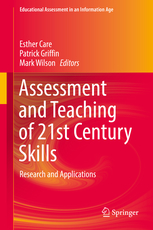Editor’s Note: The #GirlsEdu blog series is a collection of posts discussing girls’ education and the challenges it faces around the world. Some of the authors are former Echidna scholars, who studied how to improve girls’ education at Brookings before returning to their home countries to implement their research.
Twenty years ago, in the department of political science at Bayero University Kano, I came across a poster. “If you think education is expensive; try ignorance” it said. This was my first introduction to a popular Nigerian saying that captures the wit and recognizes the consequences of doing nothing to improve education in the country.
Now, 20 years later, the conversation about education in the Nigerian media still centers on the damning consequences of failing to fix the system. Most meetings on education are dominated by the feeling of an urgent need to do something, as NGOs, governments, businesses big and small and international development partners vie with each other for that big idea that could turn things around.
For those of us committed to and focused on advancing girls education, we are reminded at these meetings of the challenges facing boys’ education in Nigeria’s southeast; of the problems in educating Nigeria’s nomads and fisher-folk; of the critical lack of investment in training institutions (as the Colleges of Education strike moves into its fifth month); and of the catastrophes brought about by those who believe that Western education is forbidden, or “haram.” So many crises!
When so much needs to be done, it’s easy to get stuck trying to make a case for a panacea, and in doing so it’s equally easy to underestimate the power of micro-level innovations. Yet personally, I have found enormous inspiration supporting and initiating micro-level actions which benefit girls in the most difficult circumstances.
My journey began in 2002, when I worked on a program targeting AIDS orphans and other vulnerable children in the traditional Kano state (a group referred to as “OVC” in the development world). Members of my team tried hard to convince me that Kano was unlike southern states in Nigeria, where young, vulnerable girls and orphans could access education and psychosocial needs through community schools; in Nigeria’s north, secular community schools did not exist. In northern states, that narrative went, girls were either on the streets hawking, in traditional Islamic schools, or in over-crowded government schools—three situations that did not lend themselves to the typical OVC intervention.
After three weeks of field work, however, the reality I encountered was a different one. I found classes of community girls studying math and English lessons in the open sitting rooms of houses in the old walled city. I also found girls huddled together in make-shift nursery classes in the unused silos of farmers associations in rural Rafin Tsara. With no materials and little training, the primary school teachers who volunteered in these “schools” were on their own in a system that prioritized Islamic schooling over community-based secular education. For me, these were great community efforts crying out for support. Fortunately, the Bernard van Leer Foundation shared the same vision and took the risk of supporting the development Research and Projects Centre (dRPC), a non-profit I started to train volunteer teachers in early childhood development teaching methods and to provide teaching aids to more than 100 community schools in northern Nigeria.
The key lesson that I’ve taken away from 12 years of running this community project is that success for girls in traditional settings demands building partnerships—both to legitimize and sustain education programs. In 2013, I took this idea forward by seeking to collaborate on an education program with PSIPSE, the Partnership to Strengthen Innovation and Practice in Secondary Education. I recall one of the first queries we received in response the PSIPSE application; the MacArthur Foundation was curious about the design of a community-based girls’ education project in northern Nigeria involving the National Education Research and Development Council, the National Institute for Policy and Strategic Studies, and the Ministry of Education of southern Nigeria’s Ekiti State. The answer was simple, the project connected state officials from Ministries of Education in northern states with education officials at the federal level to strengthen state-level education reforms targeting girls and to mitigate community barriers and obstacles. But the partnerships did not end there. The collaborative project between dRPC and PSIPSE ultimately led to partnerships among state ministries of education, the 13 participating government-run schools for girls, school-based management committees, and the staff and principals of the participating schools.
So while the education of girls in northern Nigeria faces increasing challenges, the pilot PSIPSE project has led girls to successfully complete their final year of senior secondary school and complete their senior secondary school exams. State governments in northern Nigeria are taking note of lessons from this pilot and some stand poised to replicate the teacher training and girls mentoring components of the project.
As 16-year-old girls now exit the PSIPSE schools with their senior secondary school exams behind them, I have a new challenge before me—how to forge additional partnerships with NGOs, private sector organizations and government agencies working on microfinance, remedial education, apprenticeship and life skills programs. Such challenges are also being discussed at national-level dialogues where there is a new recognition that education cannot be too expensive for development. Yet cost-efficient and effective pilot projects such as the one I coordinated at dRPC reinforce the message of that poster I saw 20 years ago. As Nigerians contemplate the future, there is no need to try ignorance.









Commentary
#GirlsEdu: Fixing the Education System One Piece at a Time in Nigeria
May 21, 2014